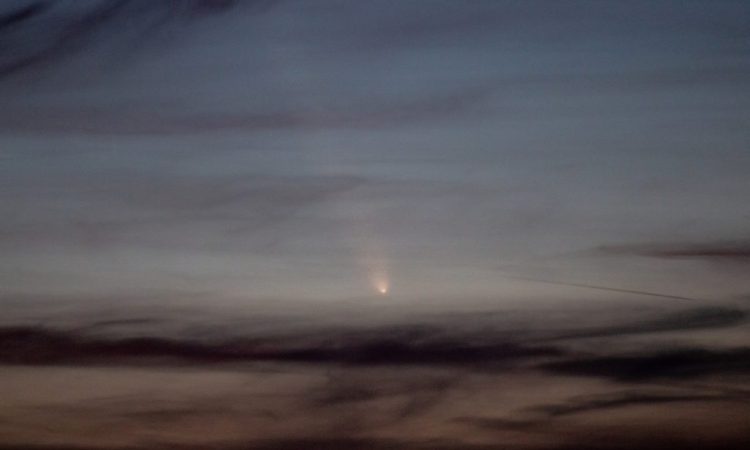
Appointment from October 13th onwards after sunset: comet C/2023 A3 promises a spectacle even to the naked eye. How to find it and maps
After leaving it in the shades of twilight, comet C/2023 A3 (Tsuchinshan/ATLAS) has passed one of the most crucial moments of its cosmic journey: the perihelion, or the point of its orbit closest to the Sun. This comet, much discussed and even initially defined as “the comet of the century”, managed to survive its turning point, continuing its journey through the Solar System. Currently, the comet is visible in the evening sky, heading west, low on the horizon. This makes its observation not particularly easy, but despite this it became visible to the naked eye, as soon as the twilight lights decreased. However, those equipped with good performance binoculars (for example a 7×50) can already glimpse the brightest part, the false nucleus and the beginning of its dust tail.
What is the false nucleus of a comet?
The false nucleus is a feature observed in comets. This is a very bright region in the center of the coma – the envelope of gas and dust that surrounds the actual nucleus of the comet. Although it looks like the nucleus, this is actually made up of the light reflected from the particles of dust and ice that the comet releases as it approaches the Sun. The real nucleus, however, is hidden by this bright cloud, being too small to be seen directly from Earth. This “nebulous” area is what allows the comet to be distinguished with the aid of instruments such as binoculars or telescopes.
The challenges of observation and the coming days
To best observe the C/2023 A3 it will be necessary to move away from the light pollution of the cities and, ideally, position yourself in an elevated area with a clear sky. In the days to come, particularly starting from October 14, although its brightness will tend to decrease, the comet will gradually gain height in the sky, thus improving visibility conditions. This increase in height will make it more visible with a darker sky as a background, improving observation even with the naked eye. Despite this, it is important to temper expectations. Even when it is visible without optical instruments, what we will see will not be a majestic sight, like many of the past “comets of the century”. It will appear rather as a slightly elongated and blurred puff of light. Furthermore, the conditions for its observation will not be favorable everywhere: to fully enjoy the vision it will be necessary to be in places with dark and little polluted skies, even better if equipped with binoculars or telescopes to better appreciate the details.
WE HIGHLY RECOMMEND YOU
The “comet of the century” that will not be
A little reflection should be made on the nickname given to the C/2023 A3. Initially, some enthusiasts and astronomers hoped that this comet could become one of the most spectacular in recent decades, even earning the nickname “comet of the century”. The brightness of the comet did not reach the hoped-for levels and the idea that it could shine brighter than expected turned out to be just an illusion. Despite this, comet C/2023 A3 remains a fascinating phenomenon. It took about 80,000 years to reach the vicinity of the an impressive period of time if we think of the geological eras and the human eras that have followed one another in the meantime. Instead of expecting grandiose spectacles, we can gratefully admire this ancient messenger, who reminds us how vast the times and spaces of our Universe are.
Article by our friend Nunzio Micale from the project

